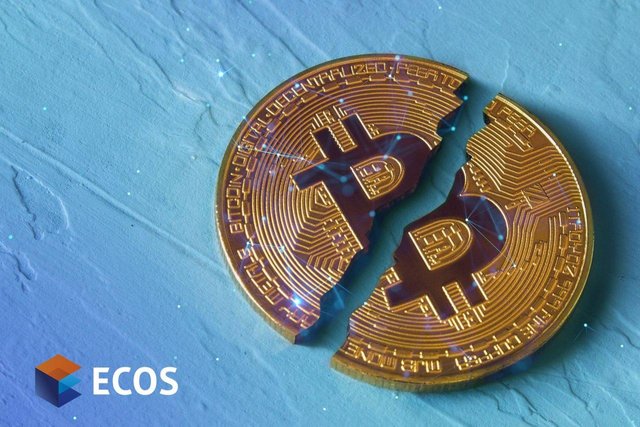
Bitcoin halving, which took place yesterday, remained the number-one trending topic of recent months! How will the rate of the №1 cryptocurrency change, what will happen with mining field, and who will benefit from halving the most?
🔘How will halving affect mining?
We have already written about what will happen to the mining market after halving, but we will repeat it again: only those miners who use the most modern and efficient equipment will maintain profitability.
The cost of mining one bitcoin (the amount spent on electricity and depreciation for equipment) ranged from $4000 to $5000 in the last two weeks before the halving. This is a standard calculation method, in which the default electricity price is 5 cents per kilowatt. (for example, in the ECOS mining project). The cost price of bitcoin has doubled after the halving, while the rate of №1 cryptocurrency is now $8740, according to Bitstamp. However, do not forget that halving would also have a positive impact on the BTC rate, according to many experts. At the same time, due to the fact that miners, who use outdated equipment, will leave the network, the complexity of mining should also fall, which will also have a good effect on miners’ income.
🔘How will halving affect the bitcoin price?
This question is on everyone's mind. Reducing the reward for each mined block artificially creates a shortage of BTC, which, according to many experts, should positively effect on its rate. In their assumptions, experts focus not only on common sense, but also on the experience of previous halvings.
So, the first halving caused an increase in the Bitcoin exchange rate from $11 to $1100 per coin. The effect of the second was long-lasting: the bull rally lasted for more than a year and ended at around $20000 per one coin. Can we expect the repetition of the history? Many experts of the crypto community actively predict the rapid growth of the №1 cryptocurrency exchange rate and its capitalization, expecting the levels of $40000 - $50000 dollars for one bitcoin this summer.
However, there are other factors, which may affect on the development of the situation after May, 12. So, in contrast to 2012 and 2016, the third bitcoin halving occurred on a bear market. And a sufficiently developed derivatives market, which simply did not exist a few years ago, could hurt the Bitcoin rate growth. Also, do not forget that 80% of all bitcoins were bought below the current rate and if the bitcoin exchange rate really starts to grow, we will probably see a series of powerful cryptocurrency sales - investors will close long positions and take profits.
Will Bitcoin continue its climbing after this? We will know this in a few weeks.
🔘How will halving affect the rates of other cryptocurrencies?
A decrease in the reward for each mined block traditionally affects not only the BTC rate, but also the rates of other cryptocurrencies. If the number of bitcoins generated in a certain period of time is reduced, and the cryptocurrency market capitalization grows, the demand for alternative digital currencies will inevitably grow. We are talking about reliable coins that have already earned their audience. The price of such altcoins will increase with the increasing demand.
And again, if you look at the history of two previous halvings, you can notice that this event has always served as a catalyst for the growth of the entire cryptocurrency market and there are no signs that the situation will change in 2020.